Krk (town)
| Krk | |
|---|---|
| Town | |
|
Krk port | |
 Krk Location of Krk in Croatia | |
| Coordinates: 45°01′N 14°34′E / 45.017°N 14.567°ECoordinates: 45°01′N 14°34′E / 45.017°N 14.567°E | |
| Country |
|
| County |
|
| Island | Krk |
| Government | |
| • Mayor | Darijo Vasilić (PGS) |
| Elevation | 0 m (0 ft) |
| Population (2011) | |
| • Total | 6,243 |
| Time zone | CET (UTC+1) |
| • Summer (DST) | CEST (UTC+2) |
| Postal code | 51 500 |
| Area code(s) | 051 |
| Vehicle registration | RI |
| Website | krk.hr |
Krk (Italian: Veglia) is the main settlement of the island of Krk, Croatia.
Characteristics
It is located on the southwest coast of the island and is the historical seat of the Roman Catholic Diocese of Krk.
The city is ancient, being among the oldest in the Adriatic. It has been continuously inhabited since Roman times and was once part of the Byzantine Theme Dalmatia after the Western Roman Empire had fallen to the barbarians.
Roman ruins can be seen today in some parts of the town, for example mosaics in the houses. The city had also preserved many medieval fortifications, including Frankopan Castle close to the Kamplin park, and part of the city walls built during the five centuries when the Republic of Venice ruled the city.
The main square of the old city is called Kamplin: which is derived from the Latin word "campus", meaning field. During Roman times, a training area was located here close to the thermal Roman spas. The remnants of the temple columns at the square gives witness to a large building from Roman times.
In the 13th century one of the "cadet branches" of the aristocratic Italian Frangipani family settled in the city and gave rise to the Croatian family of the Frankopan. Krk was the last Croatian island to be occupied by the Venetians. Krk and surrounding area were known for large use of glagoljica. In the 19th century the city was center of the Illyrian movement.
The city was once known for its unique Romance language called Vegliotic (one of the two main branches of the extinct Dalmatian language), which was spoken until the early 19th century. There was a large Italian community in the city, but Italy eventually gave up the island in favor of Yugoslavia in 1921 (when the city was officially called Krk for the first time), and many of its Italian-speaking residents subsequently left for Istria and Italy.
The city was temporarily occupied by D'Annunzio in 1921 and twenty years later was integrated into the Italian Province of Fiume between 1941 and 1943. Josip Broz Tito's Partisans liberated the city in 1944.
There it is still a small indigenous Italian community, represented within the "Unione Italiana" of Croatia.
Fiber optic network
In 2009. the municipality started the project of building a fiber-optic network on the whole area of the city (the town of Krk and 14 neighboring villages) as part of the town infrastructure. Thereby the focus is on building the passive part of the network, which is the most expensive one and the prerequisite for service providers being able to provide ultra-fast Internet connections and new e-Services. The project is covering 6243 inhabitants and 6000 households. The first issue was the elaboration of a cost-benefit analysis [1] in 2009/2010 followed by a preliminary network planning. Beginning 2013. the building authority issued the relevant approval. The next step is the elaboration of the main project which is the condition for getting the building permission and by which the project can apply for EU structural funds.
Gallery
- Krk Old Town
- Houses in Krk
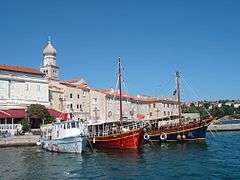 Boats at the port
Boats at the port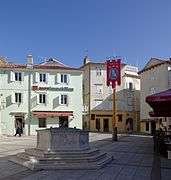 Town marketplace
Town marketplace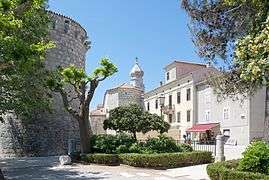 Kamplin Square
Kamplin Square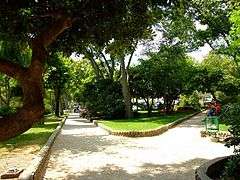 Town Park
Town Park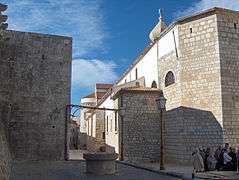 Church of the Assumption
Church of the Assumption Kamplin Square during a tourist season
Kamplin Square during a tourist season
See also
References
External links
| Wikimedia Commons has media related to Krk. |

